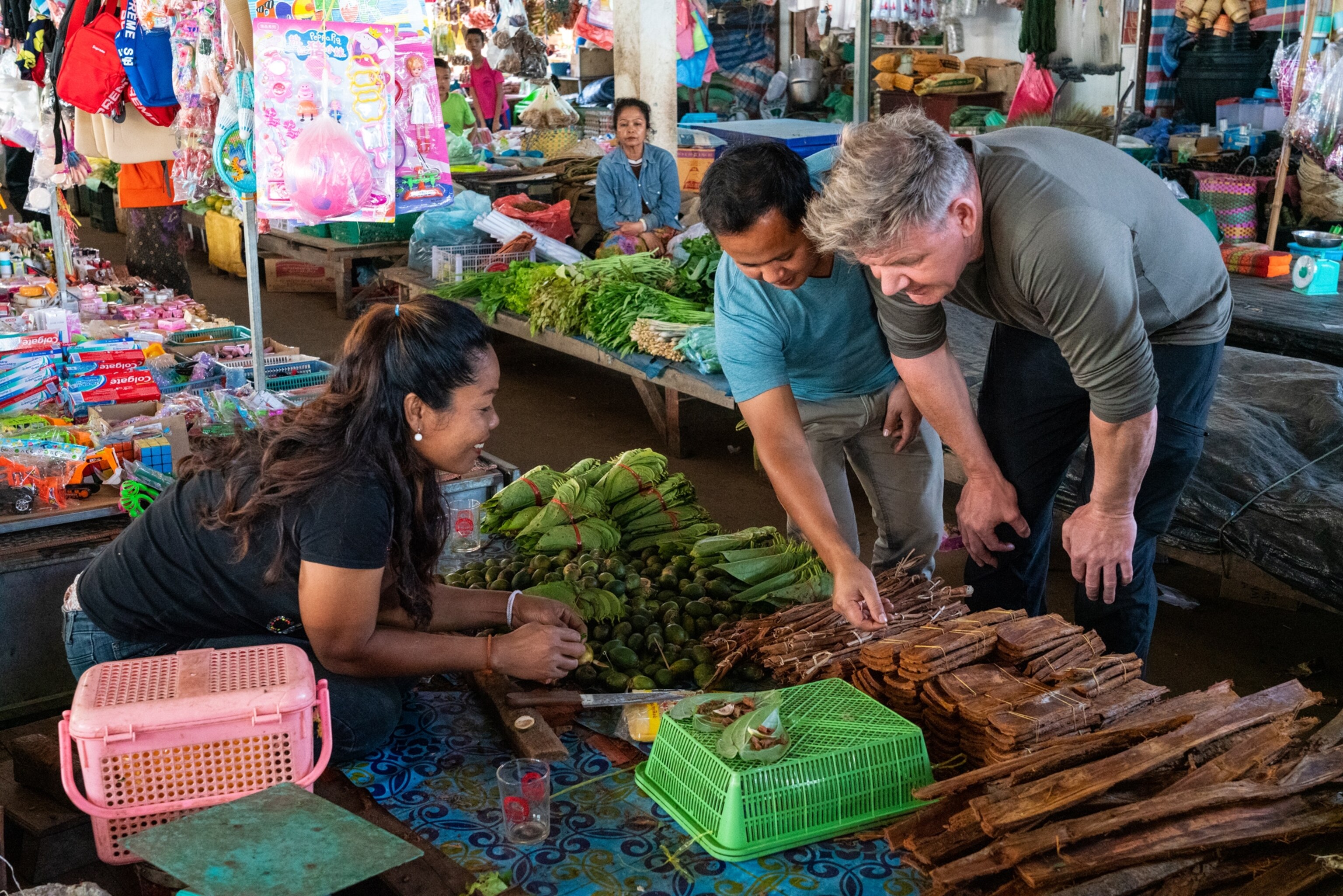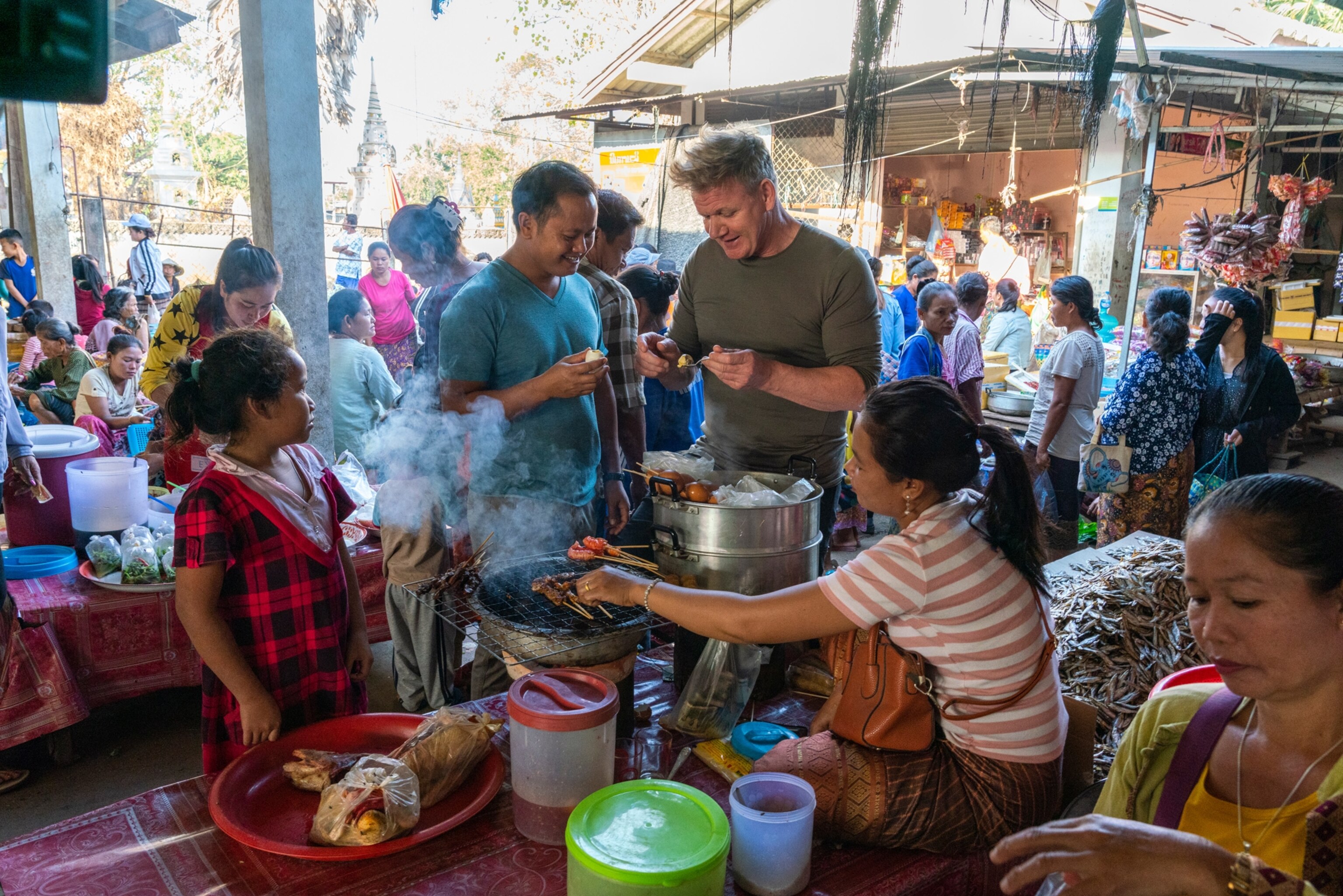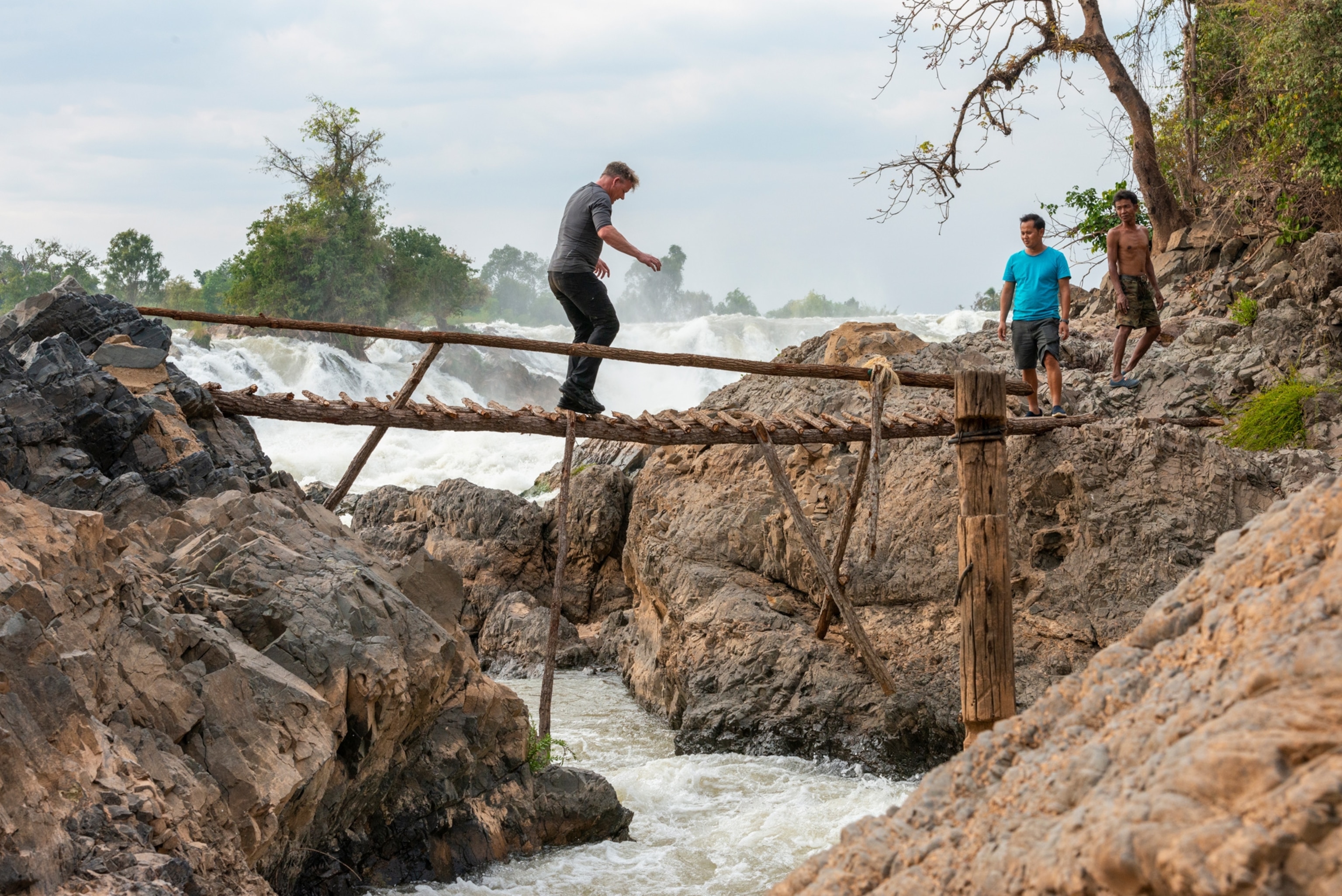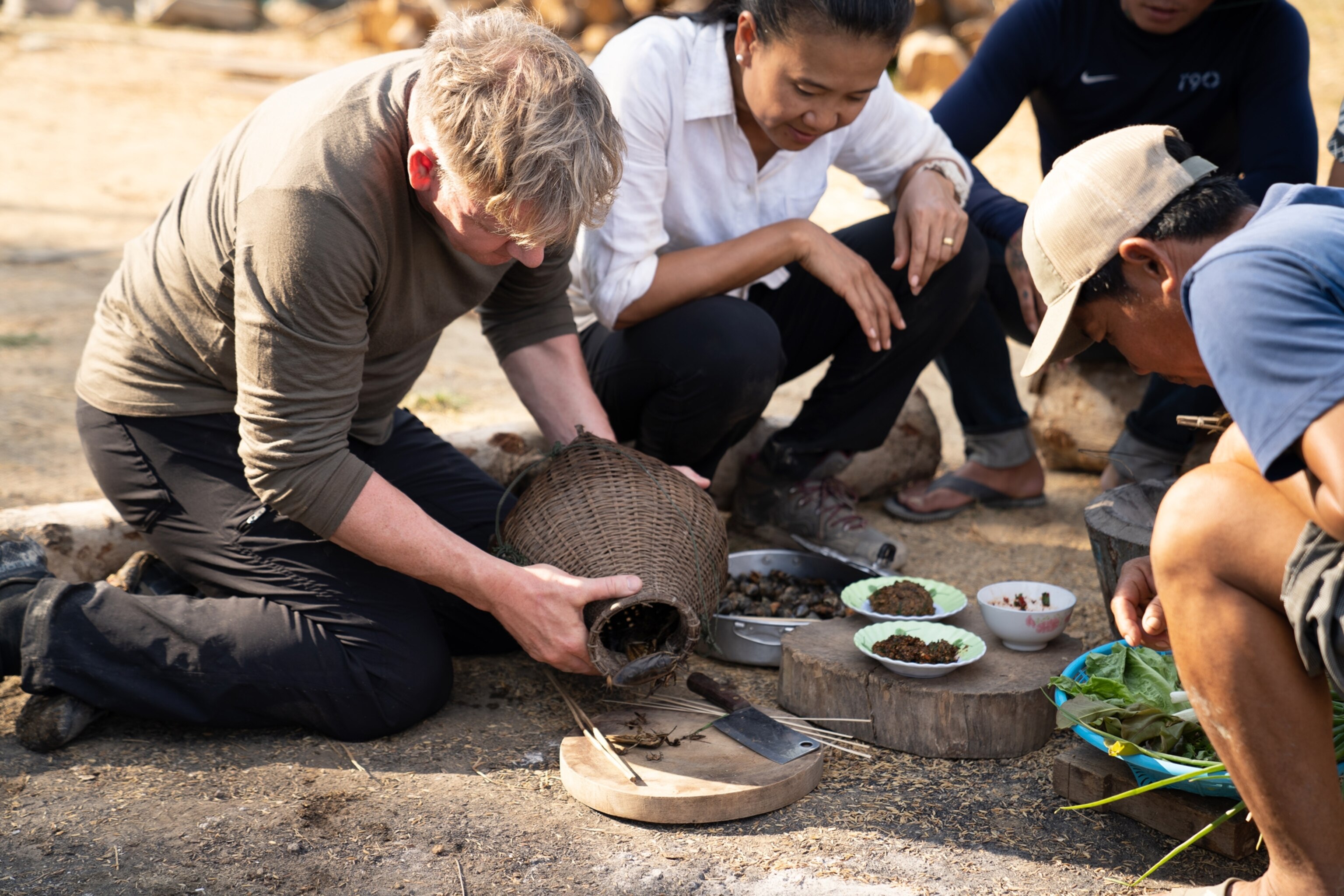Gordon Ramsay Travels the Mighty Mekong of Laos
Up and down the Mekong – known locally as ‘the river of life’ – Gordon explores the extreme lengths Laotians go to when sourcing their food.
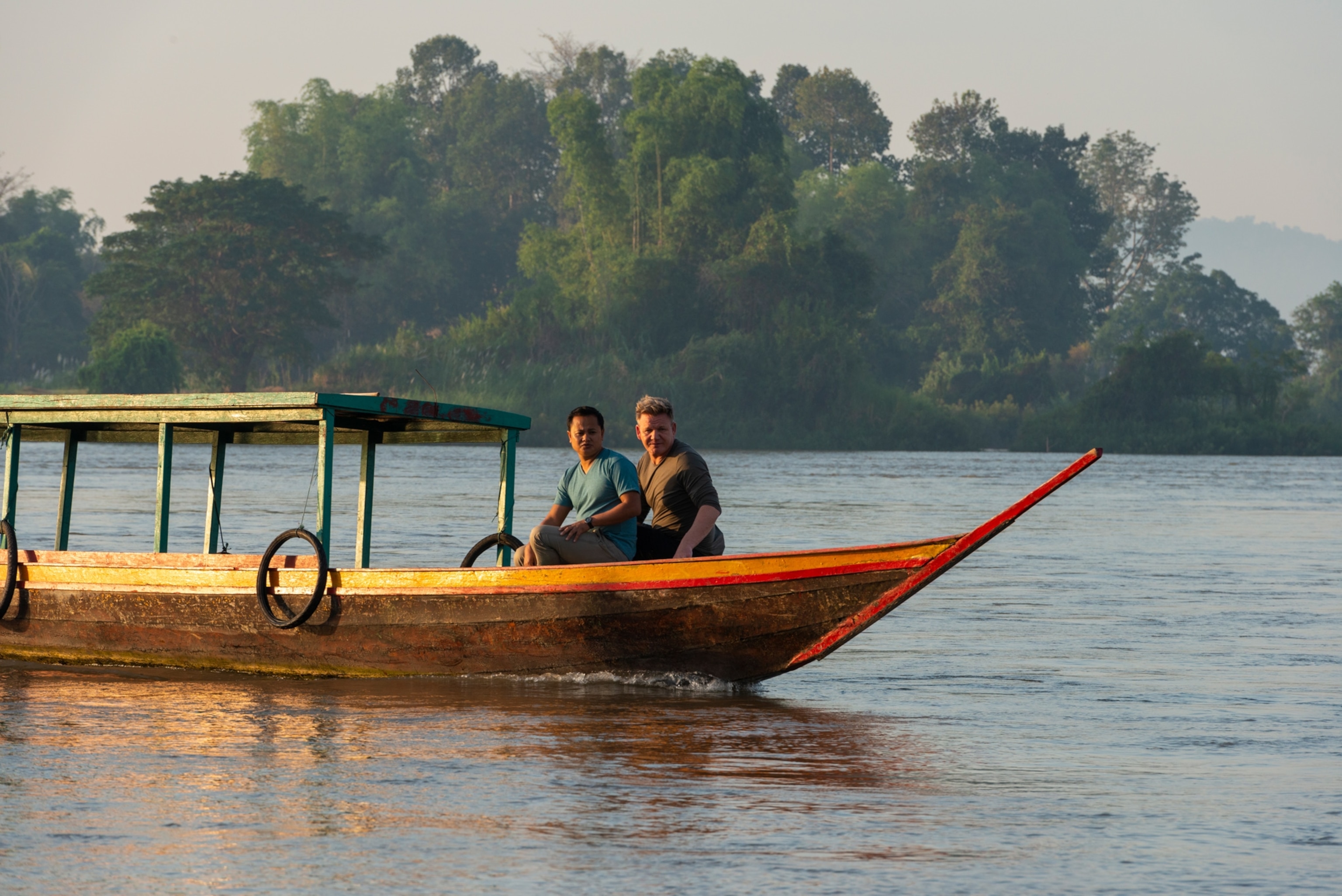
Perched precariously on the rugged shoreline of the Mekong River in Laos, Gordon Ramsay tries his hand at cast-net fishing at Khone Falls, considered the widest falls in the world. “It’s so dangerous, just at the edge of the rock,” he says, “I was hoping for lunch, but this wasn’t what I had in mind.” The great volume of the falls—2,500,000 gallons per second, is nearly double the volume of Niagara Falls.
“The fish that fight against the current are more tasty,” replies chef Joy Ngeuamboupha, who focuses on celebrating Laos’ culinary heritage at one of the top-rated restaurants in the country, Tamarind Restaurant and Cooking School, and wants to ensure there’s a place for it on the global food map. Before his culinary calling, he spent seven years as a monk, and was inspired to become a chef during that time.
The Mekong River, one of the longest in the world, travels through six countries on its way to the South China Sea, and is landlocked Laos’ river of life. It’s part highway, part water supply, and a vital source of food. The country remains a lesser-known destination, as compared with its neighbors, Thailand, Cambodia, and Vietnam—and Laotian cuisine is often confused with Thai cuisine. Here, in the Si Phan Don region of Laos (also known as the 4,000 Islands), Ramsay and Uncharted explore the connection between the people of Laos and the Mekong River.
While Laotian food may have similarities to Thai dishes, there are ingredients particular to Laotian cuisine, especially plant-based herbs, ferns, and leaves. Nearly everything is obtained from personal gardens, the river, local farms, and the forest. And while the food can be spicy, it’s more important to balance the flavors: not too sweet, not too sour, and spiced just right.
Laotians go to extreme lengths to source their ingredients. Food scarcity in areas where the Mekong River is less generous means that villagers need to seek out their protein resources beyond available river fish. The lush rice paddy fields yield smaller animals—frogs, snails, and “toebiters” (giant water bugs)—and ant larvae from nests in the forest all contribute to the Laotian diet.
- National Geographic Expeditions
Sticky rice is the staple food of Laotian meals, and green rice paddies can seem to spread to the horizon. Lao-lao, a rice whiskey, requires sticky rice to be steamed and washed, then fermented with yeast for a few days. The result can produce a moonshine topping out at 120 proof, and a simple replacement for more expensive imported liquors.
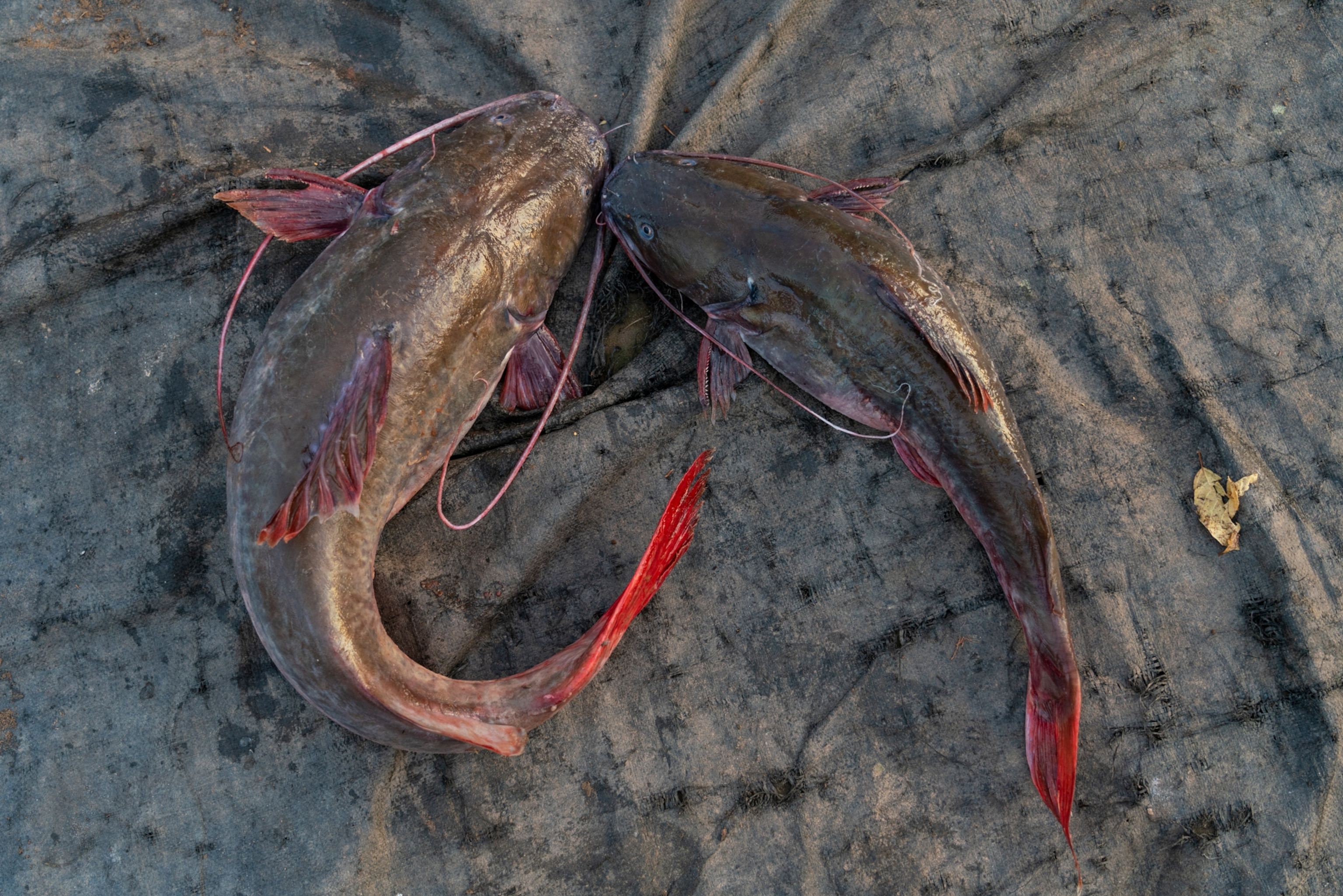
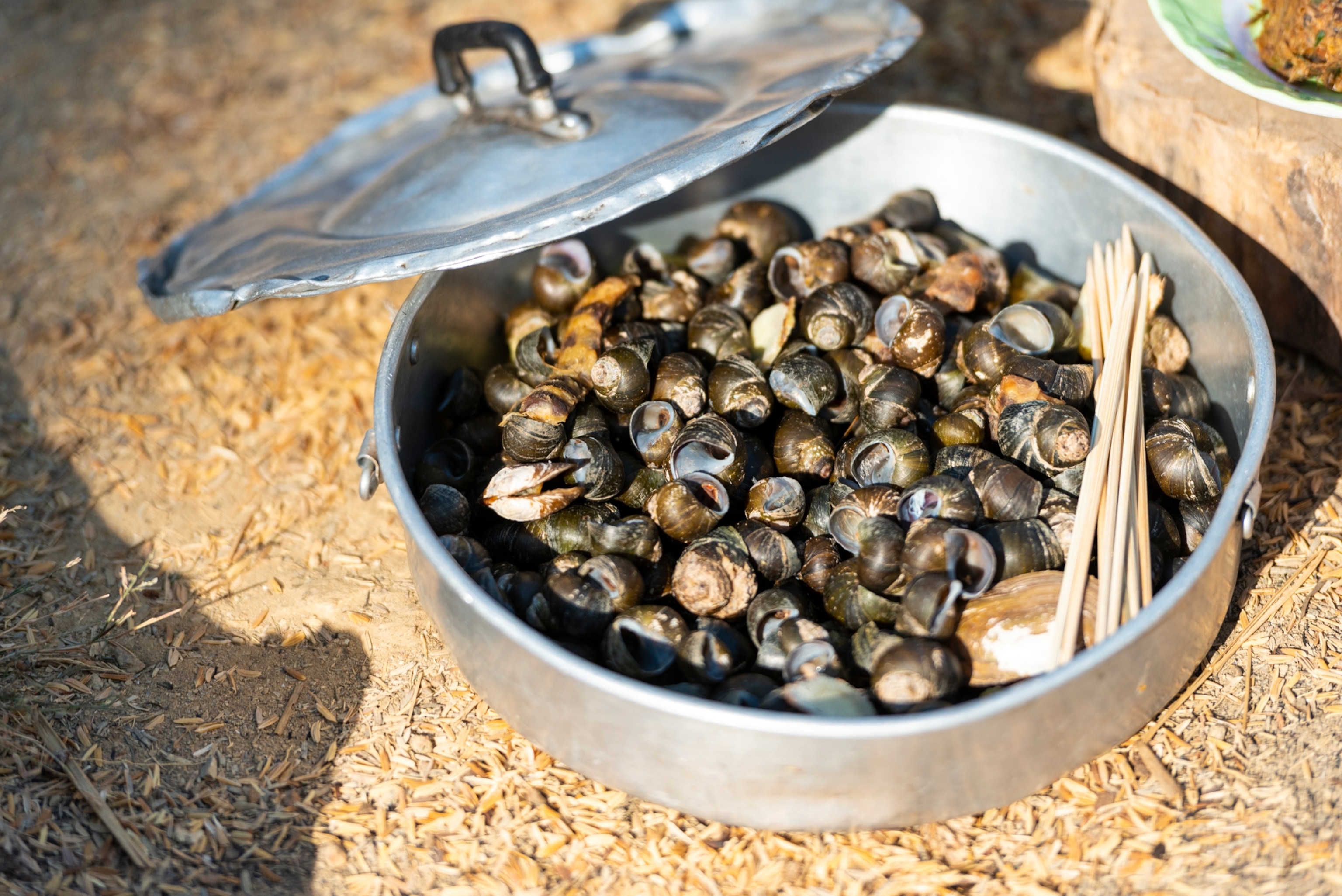
“The scary thing for me is that the meal needs to be served at 11, because the monks can’t eat after midday,” says Ramsay while cooking for the saffron-clad Buddhist monks of the Baan Khon Temple. He’s also concerned about not receiving a blessing if the monks don’t like his dishes. “The Mekong River continues to give them something very valuable—a rich culture that thrills the taste buds and feeds the soul,” he says. “That is priceless.”
